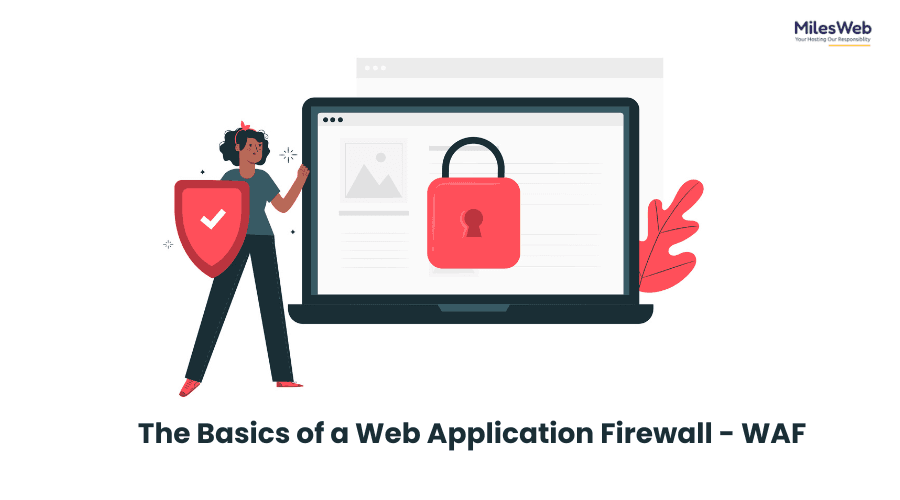Book Free Web Development Demo Class
Table of Contents
A Web Application Firewall (WAF) is an additional layer of security that proactively monitors, filters, and blocks incoming and outgoing data packets to and from a website. WAFs can be host-based, network-based, or cloud-based.
WAFs may be installed as network security tools, server-based plugins, or cloud-hosted services. They analyze data packets and review application layer logic based on predefined rules to avoid suspicious or harmful traffic. Businesses using the best cheap cloud server can remarkably enhance their security levels using a next-generation web application firewall.
Why Is WAF Security Important?
WAFs are vital for an increasing number of organizations providing online offerings —encompassing mobile app developers, digital marketers, and financial planners. A WAF can assist you in safeguarding confidential data like clients’ personal details and credit card information to avoid data breaches.
A Web Application Firewall (WAF) can help you comply with regulations such as PCI DSS, which require any organization handling customer data to implement a firewall. Therefore, a WAF is a critical component of an organization’s security model. WAFs are commonly used with reverse proxies and are often deployed alongside websites hosted on cloud cPanel hosting, adding an extra layer of protection against malicious traffic.
Organizations typically keep most of their sensitive information in a backend database that can be fetched using online applications; hence, it is necessary to have a WAF, but you should use it along with other security tools, like, intrusion detection systems (IDS), intrusion prevention systems (IPS), and conventional firewalls, to ensure multi-layered defence.
Types of Web Application Firewalls
There are three main methods for the deployment of a WAF:
Network-based WAF is a firewall tailored to reduce latency. It is the most costliest kind of WAF and requires the periodic maintenance of hardware.
2. Host-based WAF
This firewall can be completely configured into the application software. This solution is economical compared to network-based WAFs and is highly optimizable. However, it uses greater amounts of local server resources, is difficult to install, and may be costly to manage. The server machine utilized to execute a host-based WAF must be configured, which can be time-consuming and expensive.
3. Cloud-based WAF
An inexpensive, seamlessly deployable solution, that does not need to be paid for in advance, with customers paying a short-term or long-term subscription for security-as-a-service. Nonetheless, since your WAF is managed externally, it is crucial to assure that cloud-based WAFs support customization features.
WAF: Functionalities and Strengths
Web application firewalls generally come with the following benefits and functionalities:
Attack Signature Databases
Attack signatures are modules that can notify about suspicious traffic, such as request types, unusual server responses, and harmful IP addresses. WAFs depended largely on attack pattern databases that were not as impactful against new or conventional threats.
AI-driven Traffic Pattern Analysis
Artificial intelligence programs allow for behavioural investigation of traffic patterns, utilizing behavioural standards for different kinds of traffic to identify anomalies that signify an attack. This enables you to identify attacks that don’t align with known harmful patterns.
Application Profiling
Application Profiling means examining the app’s architecture, its requests, and URLs. It enables the WAF to detect and filter out unwanted requests.
Customization
Operators have the liberty to craft custom security rules that govern how application traffic is handled. This enables businesses to tailor WAF behaviour as per their requirements and avoid blocking genuine traffic.
DDoS protection platforms
You can add a cloud platform that safeguards your website against DDoS attacks. In case the WAF notices a DDoS attack, it can redirect the traffic to the DDoS scanning platform, which can smartly process a high amount of attacks.
Content Delivery Networks (CDNs)
WAFs are installed on the network side, so a cloud-hosted WAF can offer a CDN to store the website and enhance its loading speed. The WAF installs the CDN on multiple points of presence (PoPs) that are deployed across the world, so users get served from the nearest PoP.
WAF Technology
A WAF is crafted with server-side plugins, deployed as hardware provided to scan incoming traffic. WAFs secure online applications from compromised endpoints and act as reverse proxies, which safeguard users against harmful websites. Suspicious traffic can be investigated through various methods, including biometric scanners, CAPTCHA puzzles, and much more; if it seems illicit, it can be blocked immediately.
Key WAF Security Features
A next-generation Web Application Firewall (WAF) helps stop attacks by proactively analyzing web traffic to your applications. Along with WAF, a comprehensive security solution includes protection tools for websites and applications.
Attack Analytics
Get end-to-end visibility through the application security stack. With domain-specific insights, attack analytics help identify and block application-layer threats in real time.
API Security
Ensures APIs are protected from the moment they’re deployed—preventing potential threats and securing your applications against targeted attacks.
Advanced Bot Protection
Safeguards digital assets—websites, mobile apps, and APIs—against automated threats. Offers enhanced control over bot traffic to prevent online fraud, including account takeovers and credential stuffing.
Conclusion
Businesses are progressively switching to mobile apps and smartphone devices to streamline online transactions, with the majority of transactions taking place at the application layer. Cybercriminals typically target online applications to access this information.
By understanding the anatomy of online attacks and implementing robust security solutions, organizations can significantly strengthen their security posture, reduce risks, and stay ahead of emerging threats. As a proactive measure, deploying a Web Application Firewall (WAF) is not just a security requirement — it’s a strategic step toward safeguarding an organization’s online assets in today’s competitive digital landscape.
FAQ
A WAF prevents standard threats such as DDoS attacks, SQL injections, and malignant bots attempting to tamper with your website—it’s like having a security guard on the door, screening traffic before it touches your website and providing you with peace of mind.
If your website is processing user data or payments, then yes—you should definitely have a WAF, as it is an added security layer that prevents hackers from doing any harm before they even get a chance to do so and keeps your website secure at all times.
Certainly. Smaller websites tend to be prime targets for hackers, so having a WAF in operation provides you with solid protection without costing too much or being super technical, so it’s a great decision even on tight budgets.
Surprisingly, yes. Certain WAFs feature integrated CDNs that make your website load quicker by delivering content from sources near users, so in addition to increased security, you’re enhancing your website’s speed and user experience as well.
Most web hosting providers offer WAF as part of their packages or as an add-on—you simply log into your control panel, go to the security options, and turn it on, which typically requires a few clicks to begin.






